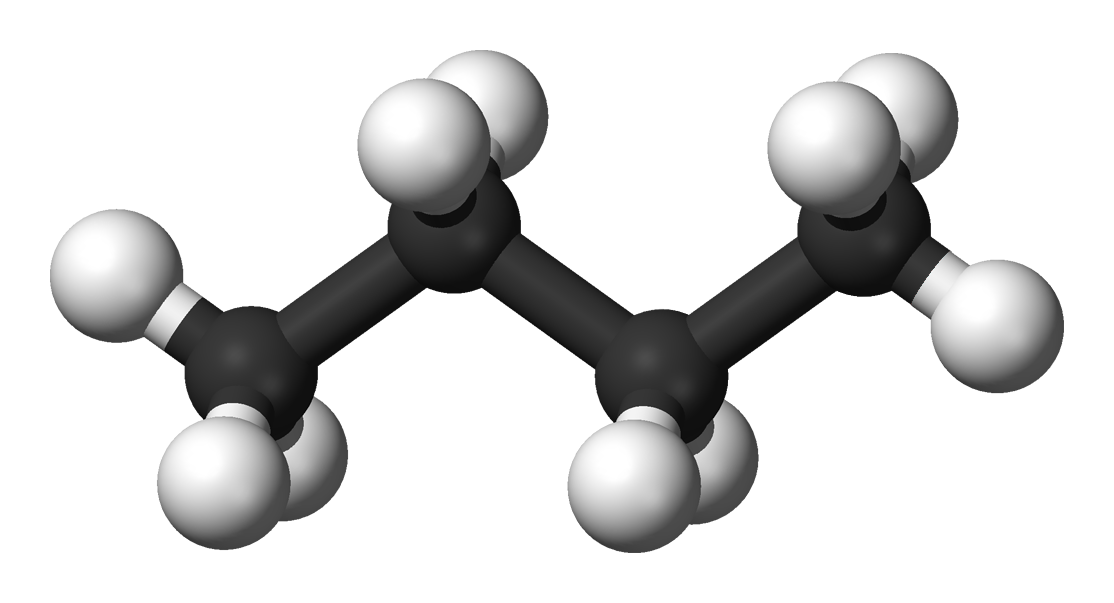We performed another lab today; our goal was to experimentally determine the molar volume of a gas. We used Butane - a colorless, highly flammable gas; its source is natural gas; its major uses are for lighter fluid and fuel; and its formula is C
4H
10. We already know how to determine the molar mass of a chemical compound; the molar mass of Butane is 58.0g/mol [4(12.0) + 10(1.0) = 58.0]. Check out the structure of Butane:


In this experiment, the pressure/temperature weren't actually measured so we don't know the EXACT molar volume. At STP, however, it should be 22.4L/mol. Our experiment was not performed at STP (0
o and 101.3kPa).
We used Butane, a sink, water, a 100mL graduated cylinder, and a weigh scale for this experiment. We first filled the sink full of warm water. Then we weighed the Butane lighter to the nearest 0.01g. Next, we submerged the 100mL graduated cylinder into the sink, making sure that it filled completely with water, inverting it (making sure there were not any air bubbles). We then placed the lighter at the bottom of the sink, underneath the graduated cylinder. Holding down the buttom of the lighter, we released Butane to fill the graduated cylinder 70mL. We saw that the water was displaced. After that, we removed the lighter and shook out all of the water before placing it in the drying oven. Once the lighter was dry, we weighed it once more. The mass was lighter than at the beginning of the experiment.
The mass of the Butane lighter before the experiment was heavier than the mass of the Butane lighter after the experiment. To determine the mass of the Butane lighter used, we subtracted the final from the initial mass:
21.17g - 21.01g = 0.16g To determine the number of moles of Butane used, we divided the number above by the molar mass of Butane:
0.16g x 1mol/58.0g = 2.8 x 10-3mol Finally, to determine the molar volume of Butane, we divided 70mL by the number above:
70mL/(2.8 x 10-3)mol = 25000mL/mol or 25L/mol. Our experiment had the following percent error:
[(measured - accepted) / (accepted)] x 100 [(25-24.15)/(24.15)] x 100 =3.5% error (using the the value we obtaned as a class with the ideal gas law; remember, the conditions are not at STP) A number of factors affected our results; perhaps there were some air bubbles inside the graduated cylinder, underneath the water. It's also possible the we didn't release enough or released too much Butane into the cylinder. In addition, we may not have shook out enough water. Finally, there could be slight miscalculations in recording the mass of the Butane lighter before and after the experiment.
Next time: Molecules, Moles and Atoms!



No comments:
Post a Comment